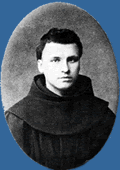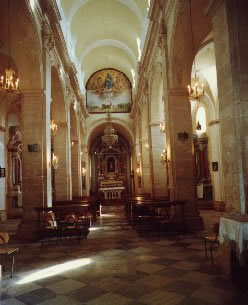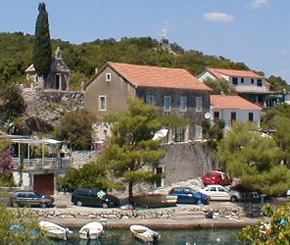|
THE LIFE OF MATO CELESTIN MEDOVIC
|
 |
Mato Celestin Medovic was born at Kuna, on peninsula Peljesac (CROATIA), on November 17, 1857. Son of a poor peasant family, he got his first education from the Franciscans in the near-by monastery of Delorita. In 1868 he left for the Franciscan monastery in Dubrovnik, where he was educated for friar. His artistic talent was noted in the monastery and in 1880 the General of the Franciscan Order invited him to Rome to study painting. The General put Medovic into the monastery of Saint Isidoro, formerly known for the activity of the Nazarene painters, and chooses Lodovico Seitz, Nazarene epigone, for his teacher. The persistent and stubborn young man refused to accept the stiff outmoded style of the Nazarenes and sought help from another teacher, Giuseppe Grandi, able eclectic of the Italian Ottocento. Following some differences with his superiors in the monastery, he left in 1883 and stayed for nine months in the private school of Antonio Ciseri in Florence.
|
His painting in several Franciscan monasteries (Fuccechio, Faenza, Cesena) discontinued the entire Italian period (1880-1886), and his training was neither systematic nor continuous; moreover, since none of his teachers was a sufficiently strong artistic personality, he did not achieve the desired result.
In 1886 the General sent him back to Dubrovnik. However, at the urging of the Viennese painter Emil Jacob Schindler, who confirmed his indubitable talent but also pointed out some unsurmounted shortcomings, the intellectuals of Dubrovnik succeeded in sending the talented young man to the Munich Academy.
In Munich Medovic was educated in the spirit of the decorative historical painting of Karl Piloty. With his graduation painting, "The Bacchanal", he scored unexpected success not only at the Glaspalast exhibition but also in many European capitals.
He was unhappy when he returned to Dubrovnik in 1893, for he saw no opportunity for further artistic development. Dr. Franjo Racki (member of the Academy) and Dr. Iso Krsnjavi ( head of the department of culture) invited him to come to Zagreb and join the artistic colony rallied round Vlaho Bukovac, who had just left Paris and settled in Zagreb, wishing to develop artistic life in the capital of Croatia. Medovic sought secularization, left the Franciscan order, and settled in Zagreb in 1895.
During the "Zagreb period" (1895-1907) he painted numerous religious compositions in North Croatian churches (Krizevci, Pozega, Nova Gradiska) and historical compositions base on Croatian history.
Having built a house-cam-studio at Kuna in 1898, and a villa on the coast at Crkvice in 1901, he also spent part of the year in the south and engaged in plain air painting. In 1901 he staged, with Oton Ivekovic, a major retrospective exhibition in Zagreb, presenting his entire Zagreb opus. Until 1907 Medovic was kept busy in Zagreb by commissions of the government, exhibited with Croatian artists (Budapest, Copenhagen, Paris, Prague, Belgrade, Sofia and Zagreb), and had his own studio; he lost it in 1907, by governmental order instigated, according to Medovic himself, by Krsnjavi, after a longer stay in Dalmatia. He left Zagreb, breaking off links with artistic milieu to which he belonged, regardless of some friction with the Society of Croatian Artists regarding the 1899 Petrograd exhibition, and even in spite of his having left the Society on the eve of the 1898 Salon.
|
After 1908 Medovic belonged exclusively to Peljesac. He lived alone
and painted tirelessly ... changing genres and painting still lives,
seascapes and landscapes, and enriching his palette with light, subtle
shades. By the end of the first decade he began to feel tired of his
isolation; he needed the impulse of a larger art centre and, like other
Croatian artists working under the impossible cultural situation, left
the country and settled in Vienna (1912-1914) brought about no major
changes in his art, except for, perhaps, some more drive in his work.
Following the large-scale one-man exhibition in Opatija in 1914, where
he sold all his paintings, the war made it impossible for him to return,
and left for Kuna where he lived with the villagers in the hardest possible
conditions.
As the war drew to a close Medovic, forgotten and exhausted, fell ill;
he neglected the disease of his kidneys and when he sought help at the
hospital in Sarajevo, it was too late.
He died on January 20, 1920.
|
from V.K. Uchytil: M.C.Medovic
|

